Table of Contents
Inventory management software helps businesses automate stock tracking, streamline operations, and maximize profitability.
Whether in retail, manufacturing, or e-commerce, using the right inventory management systems ensures better stock control, reduces waste, and improves customer satisfaction.
By integrating advanced features like real-time tracking, automated reordering, and multi-channel inventory synchronization, businesses can enhance efficiency and scalability.
Forbes Advisor analyzed various inventory management software solutions based on pricing, functionality, and ease of use and identified the top 10 options based on pricing, features, and other criteria.
Let’s find out more about it….
What Is Inventory Management Software?
Managing inventory efficiently is a game-changer for any business, and that’s where inventory management software comes in.
It automates stock tracking, reduces manual errors, and ensures you never run out of essential products.
By integrating with point-of-sale (POS) systems, accounting software, and supply chain tools,
it provides real-time visibility into stock levels, making order fulfillment smoother.
This level of integration is particularly effective when combined with a robust po system, ensuring seamless procurement and inventory synchronization.
Beyond tracking inventory, smart businesses pair their inventory tools with small business accounting software for better financial management.
Having an automated system that syncs inventory with invoices, expenses, and financial reports can save time and eliminate accounting errors.
Field Promax highlights how using the right accounting software alongside inventory management can help small businesses stay financially organized and scale more efficiently.
In Australia, for example, businesses require inventory tools that comply with tax rules and improve supply chain efficiency.
Locad explores the best inventory management solutions in Australia, helping businesses optimize their operations.
No matter the industry—retail, e-commerce, or wholesale—investing in the right inventory management systems can streamline your workflow, reduce costs, and keep your customers happy.
If you’re searching for inventory management software for small business then you don’t forget these
Take the following aspects into consideration:
User-Friendly Interface: Search for software with a user-friendly design. Your team can learn quickly
Mobile Access: Look for features that provide mobile compatibility, which allows you to track inventory while on the road, even if your staff is out of the office.
10 Best Inventory Management Software Solutions
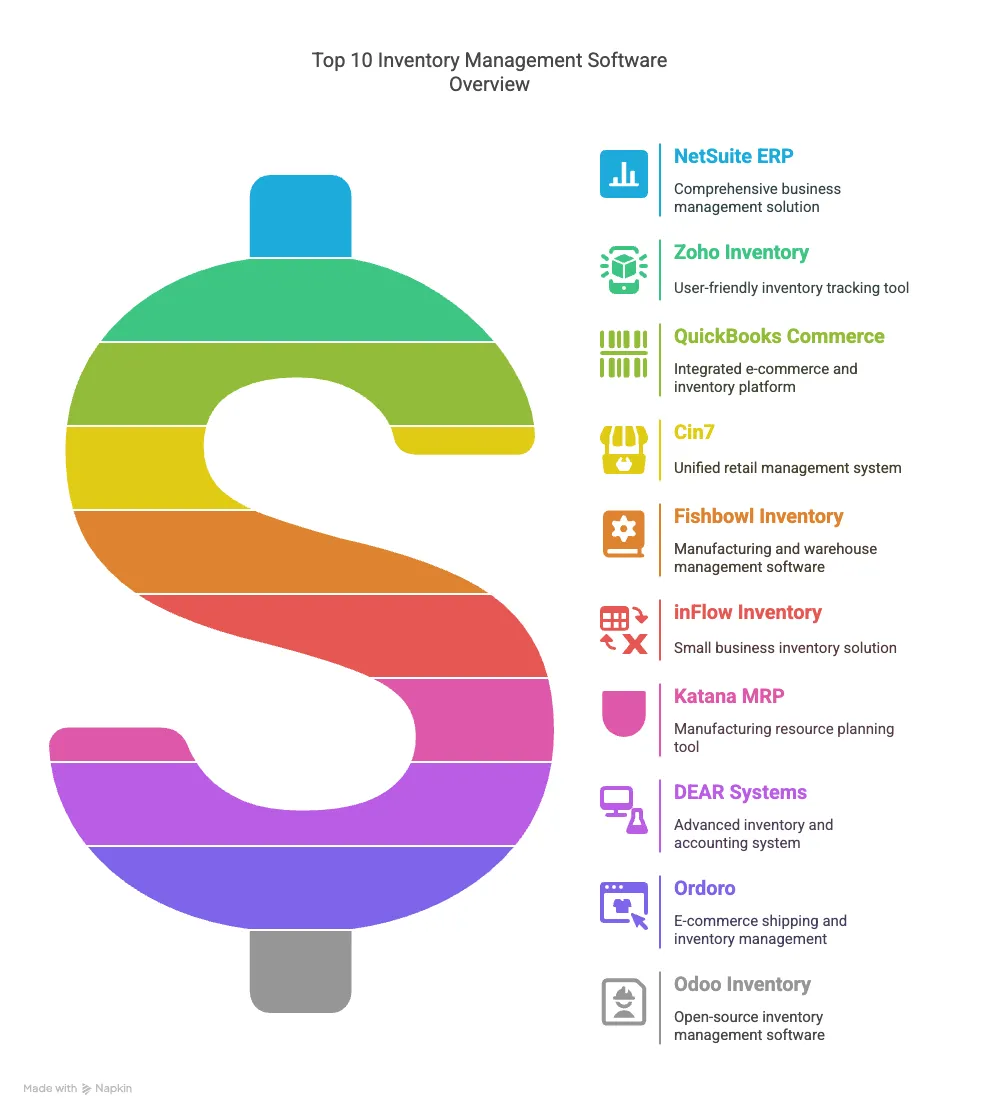
1. NetSuite
Price – $100 – $200 per user/month
Free Trial – Gives 14 Days Free Trial
With NetSuite Inventory Management systems, you’ll be able to get a unified, real-time view of inventory across all sales channels.
Before diving into features, it’s worth noting that NetSuite pricing is structured as a custom quote based on your required modules, number of users, and implementation scope, there are no published price tiers, so businesses should budget for both the software license and mandatory consultant fees during the planning phase.
With NetSuite ERP implementation you can have
- Multi-Location Fulfilment – With this, you can manage inventory across multiple locations, optimising stock levels.
- Demand-Based Replenishments – With this, you can automatically reorder stock based on old data, lead times, and seasonal trends.
- Lot And Serial Number Tracking – With this, you can ensure traceability and compliance by tracking items through lot or serial numbers.
- Item 360 Dashboard – You will get comprehensive insights of item performance, stock levels, and sales metrics.
Pros:
- Get real time data business intelligence and KPIs Comprehensive Platform Overview
- Complete All In One Solution – Combines inventory, CRM, Accounting and HR
- Reduces the need of third party integrations
- You will get 100% cloud based access from anywhere, anytime
Cons
- Prices can be expensive, especially for small to midsize businesses.
- It requires experienced consultants, adding to cost and time.
- UI is powerful, but it can be overwhelming for the first-time users.
2. Zoho Inventory: The All-Around Champion
Price – Starts from $29/month
Free Trial – Yes, you can have limited access
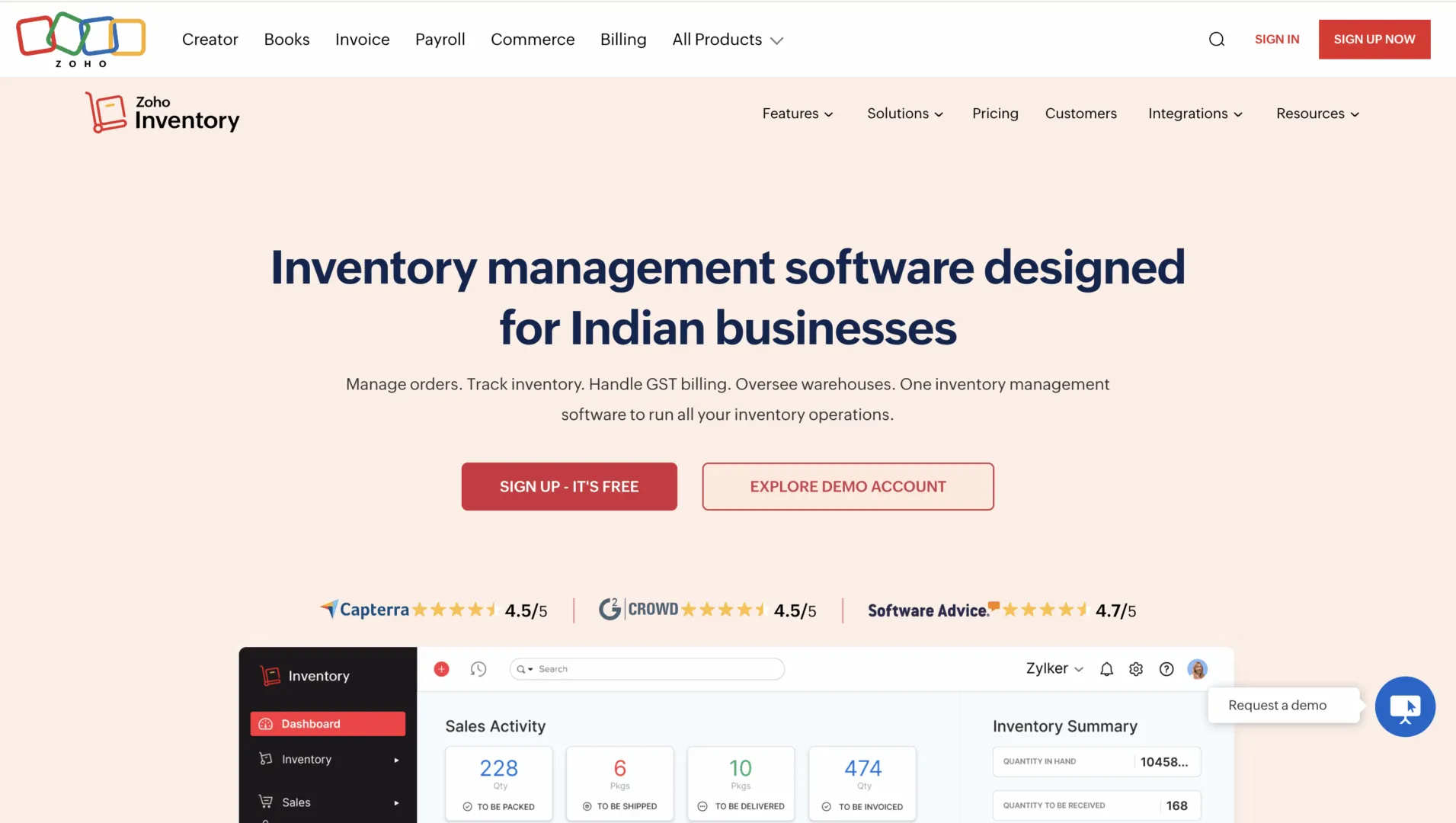
Zoho Inventory has established itself as the leading inventory management software for small to midsized businesses seeking a balance between sophisticated features and user-friendly design.
As part of the broader Zoho ecosystem, it offers unparalleled integration capabilities with CRM, accounting, and marketing tools.
With Zoho You Will Have
- End-to-End Order Management: Seamlessly track orders from creation to fulfillment with automated workflows that reduce manual intervention by up to 75%
- Multi-Channel Inventory Synchronization: Real-time stock updates across Amazon, eBay, Etsy, Shopify, and 40+ other platforms
- Advanced Forecasting Algorithms: Predictive analytics that leverage historical data to forecast demand with up to 92% accuracy
- Batch Tracking and Serial Number Management: Comprehensive traceability for regulated industries and quality control.
- Customizable Automation Rules: Set conditional triggers for reordering, customer notifications, and internal alerts
- Link With Multiple Apps: Zoho can link to Shopify, Amazon, eBay and Stripe, PayPal
Reference: Zoho Inventory Features Overview
Pros:
- You will get a user-friendly interface that is easy to navigate, even for beginners.
- Affordable pricing makes it easy for every business to use it.
- Easily get integrated with zoho apps and third party platforms
Cons
- You’ll get limited features in the free plan.
- The setup is complex for advanced features
3. QuickBooks Commerce (Trade Gecko)
Price – Starts from $249/month
Free Trial – Available for new users
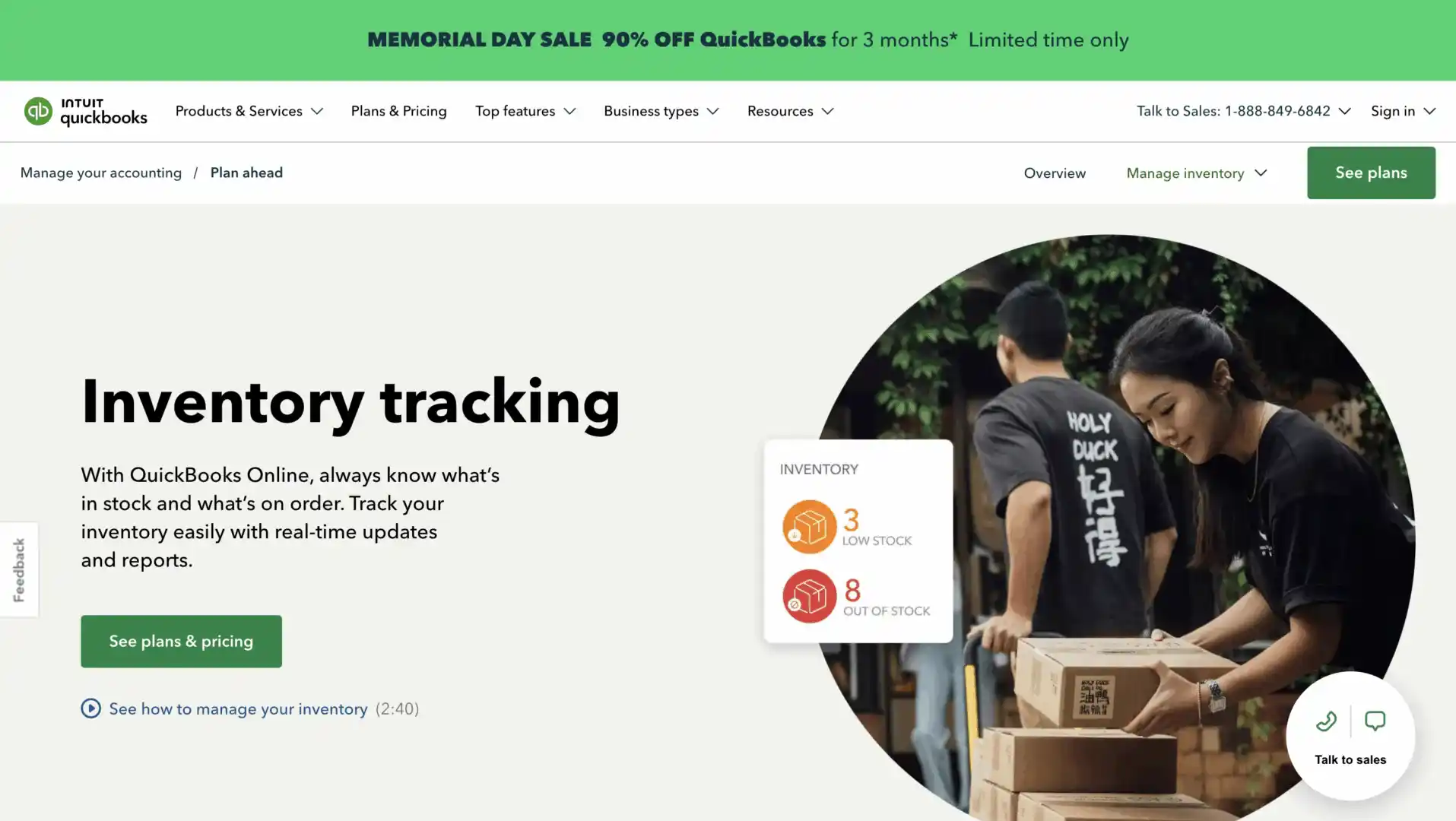
QuickBooks Commerce comes with many features, and it really helps in Inventory Management Solutions.
It has multi-platform integration features that connect with different kinds of platforms easily.
By using QuickBooks Commerce, you can streamline sales and purchase orders, invoicing and backordering.
It also provides you the B2B eCommerce platform that becomes the customisable online shopfront for wholesale customers.
Pros:
- Offers a wide range of tools for inventory and order management.
- Provides seamless integration with QuickBooks online for unified accounting and inventory management.
- Their flexible plans helps businesses a lot
Cons:
- Advanced features are complex to understand. That might need a steep learning curve.
- Limited integration features.
- Price might be high for small startups
4. Cin7
Price – Starts from $349/month
Free Trial – Not available
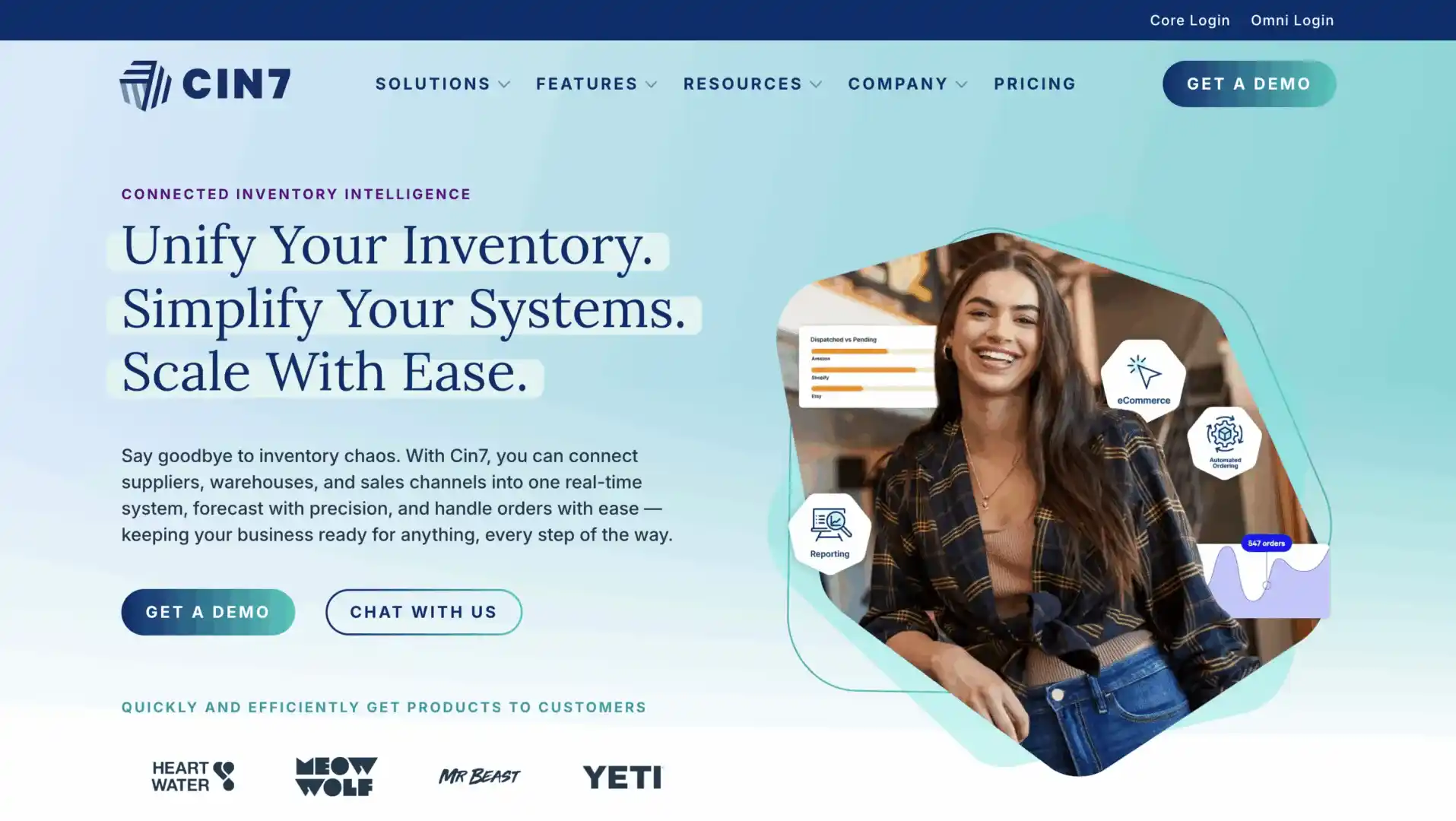
Cin7 provides you with multi-channel integration that connects with platforms like Shopify, Amazon, and eBay.
It provides you real-time tracking, batch and serial number tracking with unlimited location control.
With Cin7 you can have streamlined sales and purchase order tracking along with invoicing and backordering.
Along with all of this, it provides proper analytics on sales and purchases. You can also check inventory levels.
Pros:
- Provides a flexible plan that grows with business needs.
- Provides an intuitive, user-friendly interface for easy access for users.
- They have a reliable customer support team that gives all-around assistance.
Cons:
- Prices are steep for small businesses and startups
- Limited integration is available in third-party integrations
5. FishBowl Inventory
Price – $349/month for two users
Free Trial – Offers free trial to the users
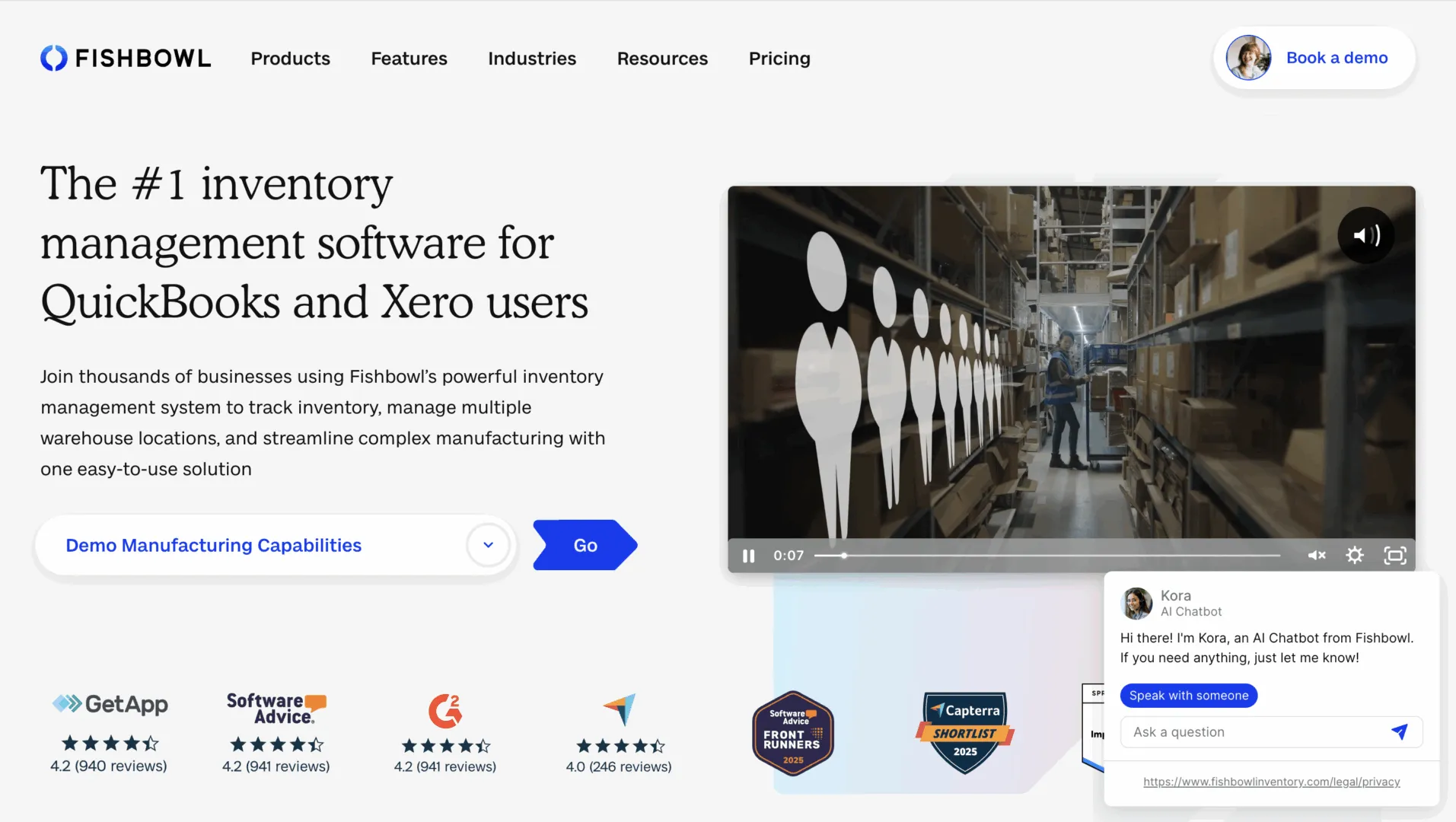
FishBowl comes with a robust set of features completely made for manufacturing and warehousing businesses.
With their profound inventory management tracker, you can easily know which items are having low stock and having high stock.
FishBowl also provides seamless integration with various apps such as Xero Accounting Software and QuickBooks Online and desktop.
Pros:
- Provides a complete wide range of tools for inventory, order and manufacturing management.
- Seamlessly integrates with popular accounting software and e-commerce platforms.
- Very user friendly interface helpful for users
Cons:
- The one-time licence is on the higher side.
- Limited features are available in lower plans.
6. InFlow Inventory Management
Price – Starts from $89/month
Free Trial – Offers 14-day free trial.
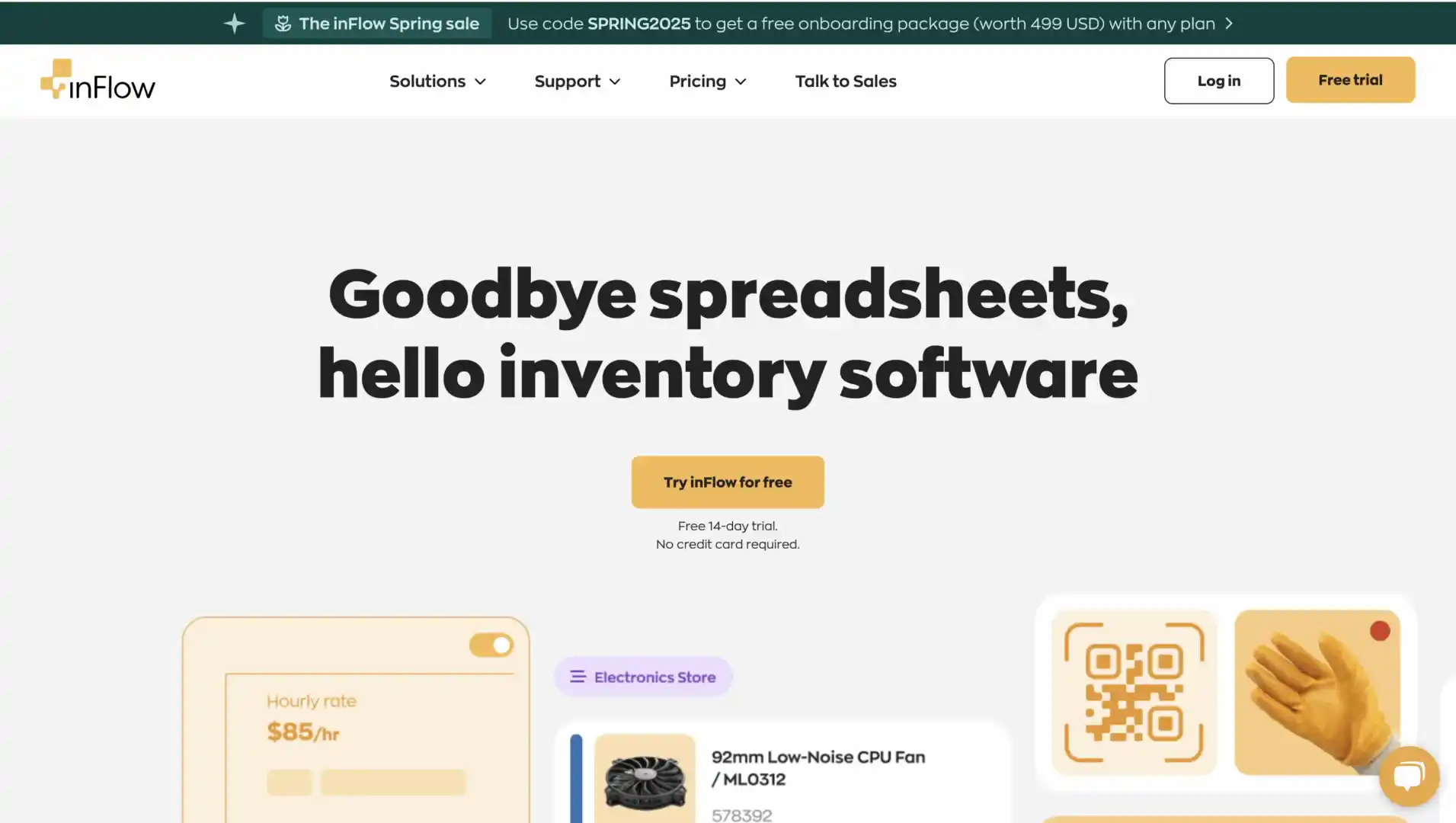
InFlow provides a robust inventory management platform that improves efficiency to the next level.
With their advanced features, you will have real-time tracking, centralised database management and stock history reports.
It’s one of the best inventory management systems with barcode scanner.
All kinds of reporting of sales, purchases, and inventory will be displayed easily in front of you.
Pros:
- Provides a user-friendly interface, making it easy to use.
- You will get a wide range of tools for inventory and order management.
- The best part is their customer support team, who is going to solve your problems.
Cons:
- The setup is complex for their advanced features.
- Pricing may be high for small businesses and startups.
7. Katana MRP
Price – Starts from $179/month
Free Trial – Offers FREE plan
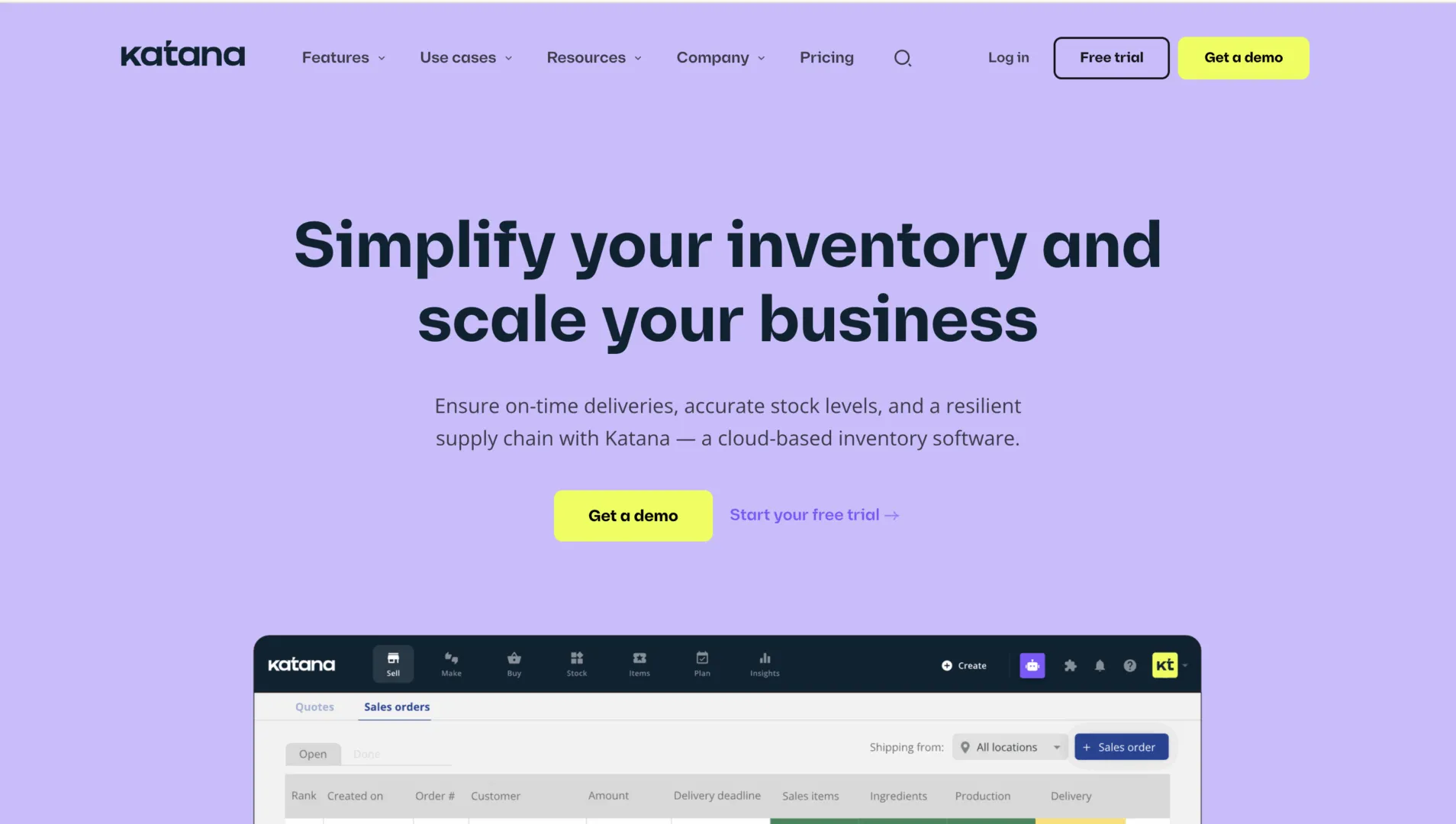
Katana has rapidly gained market share as the specialised inventory management software designed specifically for modern manufacturing businesses.
Its production-first approach differentiates it from generic inventory solutions.
Standout Features
- Visual Production Scheduling: Drag-and-drop production planning interface that improves scheduling efficiency by up to 40%.
- Auto-Calculated Manufacturing Costs: Real-time COGS calculations incorporating materials, labour, overhead, and wastage.
- Shop Floor Control System: Tablet-optimised interface for production staff to report progress and quality issues.
- Recipe/Formula Management: Version-controlled bill of materials with ingredient substitutions and scaling capabilities.
- Lot and Expiry Tracking: Complete traceability from raw material receipt through finished goods delivery.
Pros:
- It offers competitive pricing that suits various business needs
- Very user friendly interface that makes users navigate.
- Reliable customer support system making it easier for assistance.
Cons:
- The premium plans are not suitable for every business.
- Limited integrations are available.
8. OrDoro – Ecommerce Shipping Specialist
Price – Starts from $59/month
Free Trial – Offers 15-day free trial
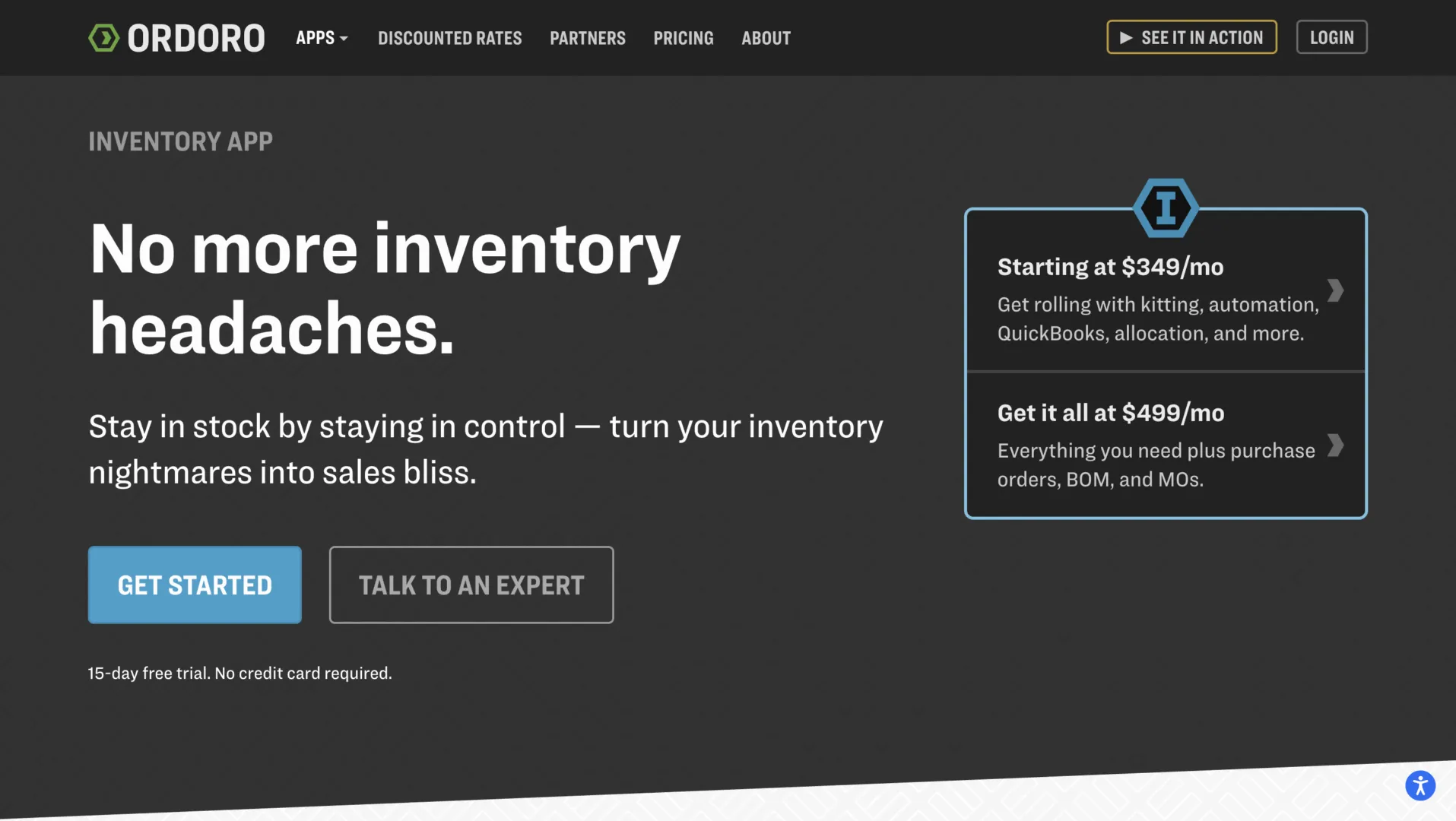
Ordoro has carved out a specialised niche as the preferred inventory management software for e-commerce businesses prioritising shipping optimisation and dropshipping capabilities.
Its shipping-first approach offers unique advantages for online retailers.
Standout Features
- Dynamic Rate Shopping Engine: Automatically selects the most cost-effective shipping option based on dimensional weight, delivery timeframe, and carrier performance.
- Dropshipping Automation: Direct-to-supplier order routing that can reduce fulfillment processing time by up to 83%
- Kitting and Bundle Management: Dynamic inventory allocation for product bundles with component-level tracking
- Return Merchandise Authorization (RMA) System: Streamlined returns processing with QR code generation and automated restocking
- International Documentation Suite: Automated generation of customs forms, commercial invoices, and harmonized tariff code assignment.
Pros:
- It is known for its user-friendly interface and easy-to-navigate dashboard.
- Provides exceptional customer service that entice users
- It provides robust dropshipping tools, including order routing and vendor management.
Cons:
- Provides limited features in the FREE plan.
- Additional charges for high volume
9. Odoo Inventory
Price – Starts at $24/month
Free Trial – Offers 15 day free trial
Odoo Inventory provides a robust set of features tailored for efficient inventory management.
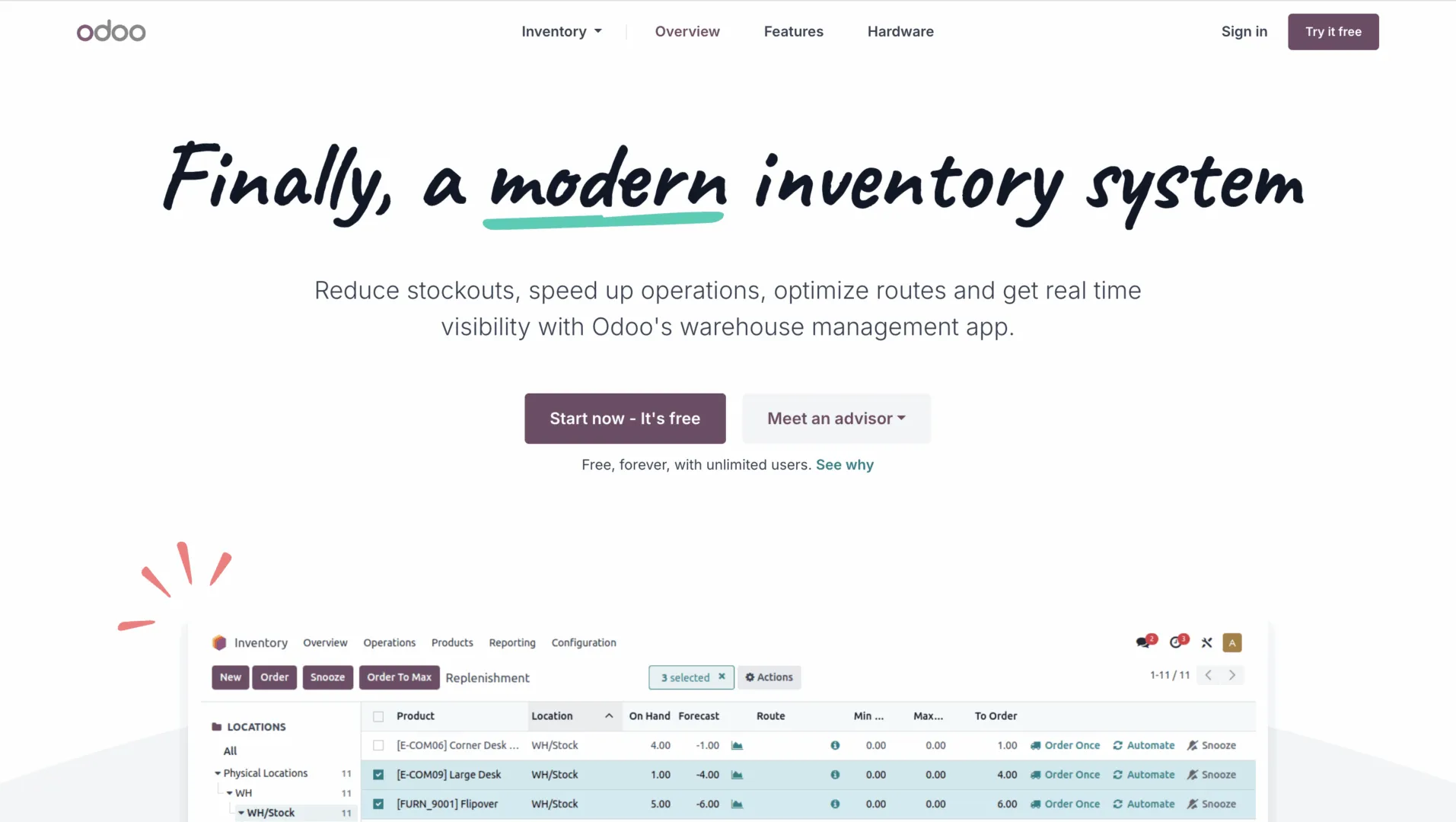
Standard Features
- Real Time Inventory Tracking – You can monitor stock level across multiple locations
- Scan Barcode – You can streamline operations with barcode integration.
- Sync Inventory Easily – You can ensure consistent information across sales channel
- Integration Capabilities – It can easily integrate with other Odoo apps like Sales, Purchase and Accounting.
Pros:
- Modular Structure – You need to pay only for the apps you need; that can save money.
- Comprehensive features – It offers a wide range of tools for inventory management, suitable for different business sizes.
- User Friendly Interface – Intuitive design that’s very easy to navigate by users
Cons:
- Initial setup is little difficult for first time users
- Users may require more time to get acquainted with all the features.
10. DEAR Systems (Cin 7 Core)
Price – $349/month for 5 users
Free Trial – Not clarified yet
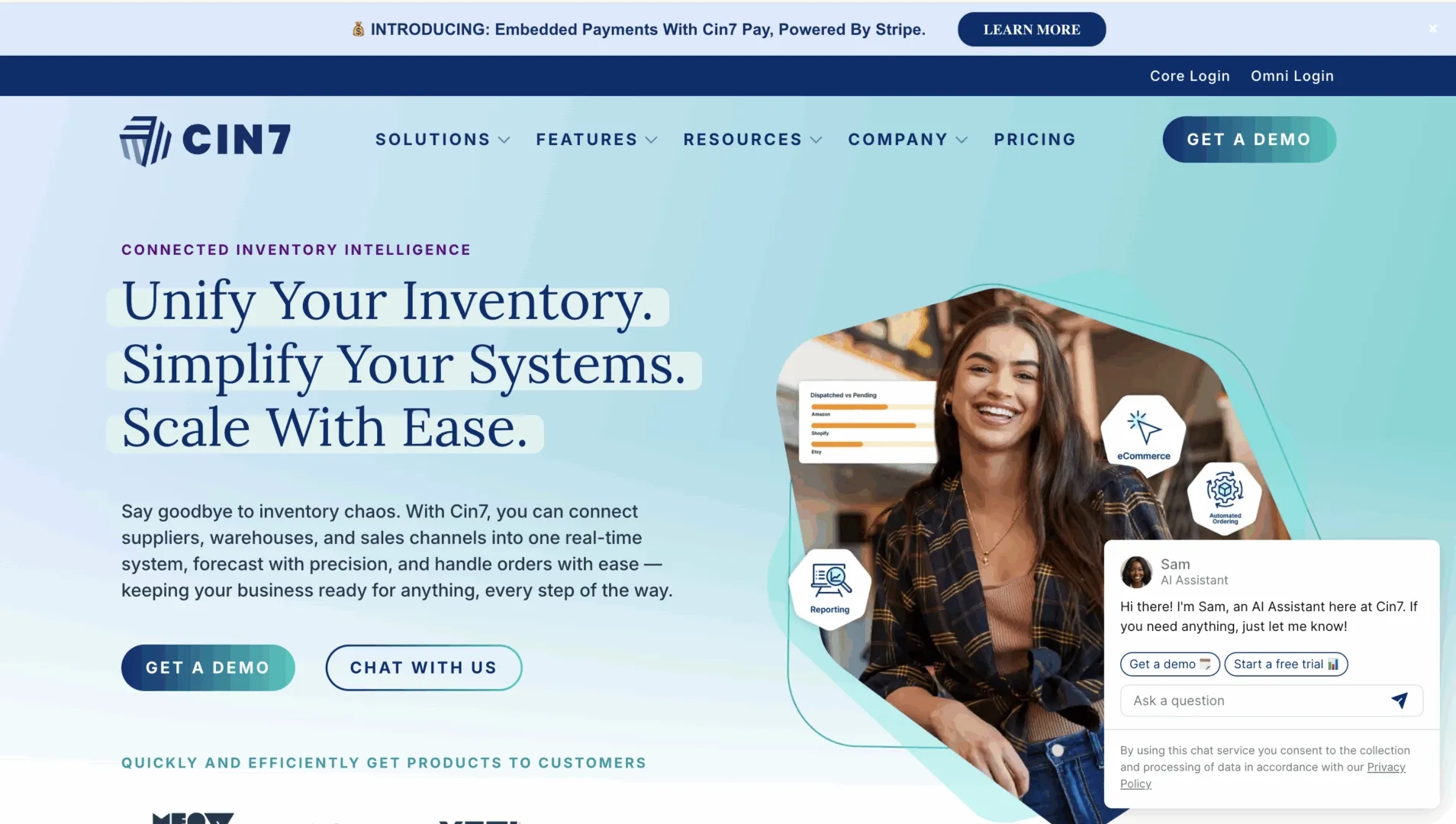
Cin 7 Core is clearly designed to streamline operations for product-based businesses that offer a suite of features which improves efficiency and scalability.
Standard Features:
- Batch & Serial Number Tracking – It maintains detailed records for product traceability, which is really important for quality control.
- Multi-Warehouse Management – You can oversee inventory across multiple locations with real visibility.
- Automation – You can automate routine tasks like order processing and stock adjustments that reduce manual workloads.
- Integration Capabilities – Seamlessly connect with e-commerce platforms and accounting software.
- Comprehensive Reporting – You can generate detailed report to make better decisions.
Pros:
- Provides flexible plans that enhance business growth on every scale.
- Intuitive designs that facilitate ease of use at all levels.
- Provides wide range of integrations.
Cons:
- Some users report slow performance, particularly when handling large volumes.
- Customer support delay is happening
Industry-Specific Considerations
Retail and E-commerce
For retail businesses, the primary inventory management software considerations should include:
- Multichannel synchronization speed: How quickly inventory updates propagate across sales channels
- Product variant handling: Support for size/color/style variations with individual SKU tracking
- Bundle and promotion capabilities: Ability to create temporary product groupings with special pricing
- Returns processing efficiency: Streamlined workflows for customer returns and restocking
Best Solution: Zoho Inventory or Ordoro depending on shipping volume
Manufacturing
Manufacturing businesses should prioritize these inventory management software features:
- Bill of Materials (BOM) flexibility: Support for multi-level assemblies and revision control
- Work-in-Progress (WIP) tracking: Visibility into partially completed production runs
- Quality control integration: Inspection checkpoints and non-conformance reporting
- Material Requirements Planning (MRP): Automated purchasing based on production schedules
Best Solution: Katana or Cin7 for larger operations
Wholesale Distribution
Wholesale distributors should focus on these inventory management software capabilities:
- Customer-specific pricing tiers: Ability to maintain multiple price lists with contract terms
- Minimum order enforcement: Automated validation of order minimums by customer type
- Partial shipment handling: Support for backorders and split deliveries
- Volume discount automation: Tiered pricing based on order quantity or customer history
Best Solution: Cin7 or Zoho Inventory
Service Businesses with Inventory
Service-oriented companies managing inventory should consider:
- Service-part relationships: Connecting inventory items to specific service offerings
- Technician truck inventory: Mobile tracking of inventory across service vehicles
- Client-site consignment: Managing company-owned inventory at customer locations
- Usage-based reordering: Automated purchasing based on service frequency
Best Solution: inFlow or Zoho Inventory
Final Verdict: Choosing Your Ideal Solution
Decision Framework
When making your final inventory management software selection, prioritize:
- Current Pain Points: Which specific inventory challenges are most critical to address?
- Growth Trajectory: How will your inventory needs evolve over the next 3-5 years?
- Integration Requirements: What existing systems must connect seamlessly?
- Implementation Resources: What internal expertise can you dedicate to the transition?
- Budget Reality: What is your total cost of ownership threshold?
Remember that the right inventory management software is ultimately determined by your specific business requirements, existing technology ecosystem, and growth objectives.
Most providers offer personalized demonstrations and trial periods that can provide valuable hands-on experience before making your final decision.
FAQ
1. Which software is used for inventory management?
There are multiple popluar inventory management systems that includes Zoho inventory, QuickBooks, NetSuite, Odoo, and FishBowl.
These tools help you track stock levels, manage orders, streamline warehouse operations, and improve suppky chain visibility.
2. What are the 4 types of inventory management?
The four main types of inventory management are:
1. Raw Materials – Basic components used to produce finished goods.
2. Work In Progess (WIP) – Items currently being manufactured.
3. Finished Goods – Products ready for sale and distribution.
4. Maintainence, Repair, and Operations Goods – Items used in production but nor part of the final product.
That’s why using reliable accounting and stock management software helps businesses accurately track.
3. Is SAP an inventory management software?
Yes, SAP is one of the famous inventory management systems. It offers powerful modules for tracking inventory, tracking stock levels and managing them properly, and automating supply chain processes.
It’s a comprehensive accounting and stock management software that helps businesses streamline operations, reduce inventory costs and maintain accurate track record
4. What is ERP inventory management software?
ERP is a type of inventory management systems software that integrates inventory tracking with core business functions like accounting, procurement, sales and logistics.
It helps you in providing real time stock levels, automates inventory processes, and improves overall supply chain efficiency.